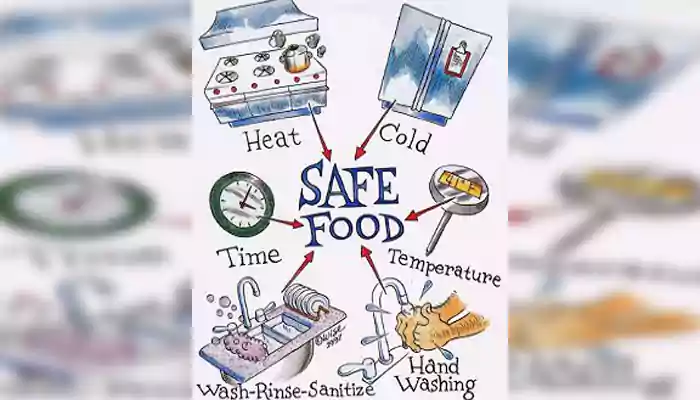
Accidents can occur in the kitchen, whether you're an experienced chef or new to the restaurant industry. However, viewing the kitchen as a potential hazard is not necessary. By incorporating safety tips and optimal practices for your kitchen staff, you ensure their well-being and enhance employee retention and overall service quality. According to the National Library of Medicine, evidence suggests that stress and work-related injuries are prevalent among restaurant industry employees due to various factors. Continue reading to discover ways to prevent injuries and establish effective safety protocols.
Food hygiene and food safety, while related, are distinct concepts. Food safety encompasses the essential practices that restaurants must adhere to, ensuring the fitness of food for consumption by guests. Various legislations support these practices, with the Food Safety Act of 1990 as the primary framework. The trio of pivotal components in food safety includes:

This encompasses the proper handling of food, preventing cross-contamination, implementing thorough cleaning procedures, maintaining personal hygiene, controlling allergens, ensuring safe storage, and adhering to correct cooking temperatures.
Ensuring the restaurant's longevity involves crucial aspects such as consistent maintenance. This encompasses routine cleaning, proper building upkeep, a logical kitchen layout, adequate lighting, ventilation, pest control, and efficient waste management. These elements collectively contribute to a safe and well-functioning environment, mitigating potential risks.
The final aspect pertains to the comprehensive system ensuring the safety and cleanliness of the food served and the kitchen itself. This encompasses the restaurant's documentation, labeling, traceability, supply chain, delivery, and staff training. To effectively uphold food safety, the implementation of food hygiene is crucial, addressing the storage, preparation, and cooking of food. As Hygiene Food Safety outlines, key components of food hygiene involve meticulous attention to these aspects.
Establishing a sanitary and health-conscious environment in your kitchen is essential for ensuring the delivery of safe and wholesome meals to your guests.
Thoroughly washing your hands stands as a critical step in maintaining food hygiene, safeguarding both your restaurant team and patrons from potential illnesses.
To prevent food spoilage, store perishable items in a refrigerated environment to inhibit bacterial growth.
Just like maintaining precise temperature control, ensuring appropriate storage for food is essential for consistently delivering top-notch meals. Properly store perishable items and dry goods in designated areas to minimize wastage and prevent the rapid spread of germs.
The ultimate facet of food hygiene revolves around food handling, emphasizing the careful management of food during storage and preparation. Minimize the likelihood of cross-contamination by maintaining proper food handling practices throughout the entire cooking process, from initiation to completion. To ensure the well-being of both staff and guests and to enhance the overall dining experience, it is imperative to consistently implement effective food safety and hygiene procedures.
Every eatery possesses its distinctive charm, offering a culinary experience that stands alone. Despite diverse menus and unique atmospheres, most kitchens adhere to a set of universal principles for success. According to Your Health and Safety Encyclopedia, these general guidelines are instrumental in maintaining your restaurant's commitment to safety, hygiene, and overall excellence in operations.
Mastering the ins and outs of the culinary realm is pivotal for culinary success. Ensuring top-notch meal quality involves adhering to food safety and maintaining impeccable food hygiene. These practices collectively contribute to elevating your culinary offerings and creating a safe and efficient kitchen environment for your team.